It's no secret that drug ads that sow hypochondria, raise health fears and "sell" diseases are often the most common -- and effective -- even when the drugs themselves are of questionable safety.
Before direct-to-consumer advertising, which began in 1999, ads which "sold" diseases said to afflict normal people were rampant, often casting women, children, the elderly and mentally ill in a bad light. Today, the ads still cast women, children, the elderly and mentally ill in a bad light -- except that now they are targeted at us instead of doctors!
Here are some of Pharma's most offensive ad campaigns -- then and now.
You-Are-Sick Ads
When psychiatric drugs first became popular for use in the general population in the late 1960s, everyday personality problems became imbued with psychiatric labels. "Lady, your anxiety is showing (over a coexisting depression)," says a 1970 ad, showing an older, wrinkly woman in a bouffant wig with gigantic sunglasses and garish jewelry. "On the visible level, this middle-aged patient dresses to look too young, exhibits a tense, continuous smile and may have bitten nails or overplucked eyebrows," says the ad copy. "What doesn't show as clearly is the coexisting depression." The ad, both sexist and ageist, suggests the woman needs the antidepressant and tranquillizer Triavil.
Another ad from 1968 shows a bored, upper middle class couple whose hauteur is also said to really be depression. "Do you have patients who try to hide frustration behind conformity?" says the ad for the antidepressant Aventyl HCl.
You'd think such demeaning ads would vanish with DTC advertising because people would be offended. But "You're Sicker-Than-You-Think" ads are alive and well since DTC advertising.
A three-page consumer ad in the late 2000s similarly conveys that everyday psychological traits could actually be dire mental problems that require medication. If you are "talking too fast," "spending out of control," "sleeping less," "flying off the handle" and "buying things you don't need," you could be suffering from bipolar disorder, said the ads. And here you thought it was the coffee. Accompanying photos of a woman screaming into a phone and contorting her face are so extreme they could come out of the movie Halloween Part II, if the woman were holding a knife.
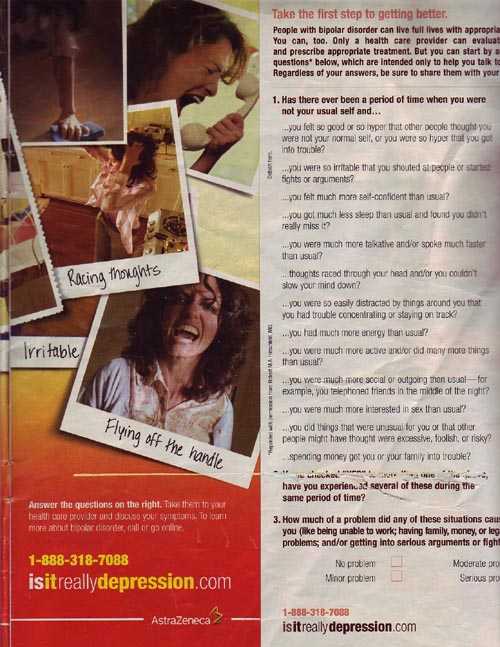
DTC ads don't just escalate everyday problems into psychiatric problems -- they also escalate real psychiatric problems into irresponsible, sensationalistic stereotypes. Ads for the best-selling antipsychotic Risperdal, widely used in children and in soldiers with PTSD, suggest that people with mental illness have hallucinatory fears about "boiling rain" and "dog women." The "dog woman" ad, showing a half dog, half woman crouched on her elbows, her eyes blackened, furthers the sensationalizing of mental illness with the tag line, "Because Relapses Are A Living Nightmare."
Your-Kid-is-Sick Ads
Long before Pharma convinced parents, teachers and clinicians that millions of U.S. kids had Attention Deficit Hyperactivity Disorder (ADHD), kids were said to suffer from "Minimal Brain Dysfunction" (MBD) and "Hyperkinesis" -- two conditions that were essentially the same as ADHD. In fact, so many kids had MBD by 1976 an ad for the drug Cylert hailed the "Importance of single daily dose to the child, the parents and the teacher," because kids wouldn't have to be singled out anymore at pill time at school. (ADHD has been so huckstered, a YMCA ad spoofs it with the headline, "Before Video Games, Before Facebook, Before Ritalin, There Was Basketball.")
Yet neither Cylert -- which was withdrawn under a cloud of liver failure and deaths -- or the current ADHD drugs are safe. In 2009, researchers reported that kids are more likely to die sudden deaths on them, and the American Heart Association recommends electrocardiograms (ECGs) before kids take them. And yet, combined sales of ADHD drugs continued to grow from $4.05 billion to
" target="_hplink">$7.42 billion in 2010.
Thirty years ago, kids seemed way overmedicated. They were given the antipsychotic Thorazine for their "hyperactivity," "hostility," sleep problems and even for vomiting. Kids with tics, stuttering and school phobia were given the tranquillizer Miltown. Picky eaters and kids who wet the bed were also given tranquillizers.
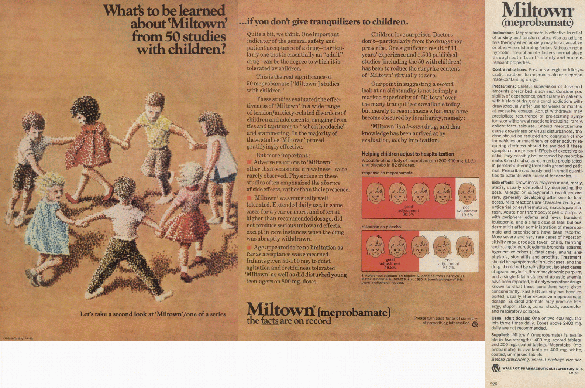
But today, overmedication of kids continues and ads are aimed at parents as unabashedly as breakfast cereal. Give your kid the bubble gum-flavored ADHD med LiquADD, says one ad. "Give 'em the Grape" says another for the grape flavored ADHD med, Methylin.
DTC advertising has also convinced parents their kids suffer from GERD (gastroesophageal reflux disease) otherwise known as Acid Reflux Disease, which was barely a disease in adults much less kids before consumer advertising. "GERD Can Be a Big Problem for Little Kids," say award-winning ads for Prevacid.
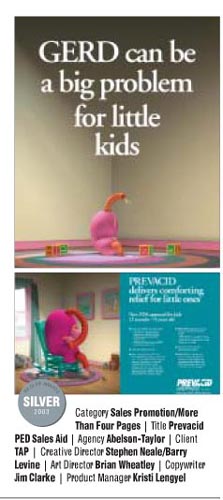
In Europe kids are treated for another "adult disease" and given chewable Liptitor, to lower their cholesterol.
Consumer Ads That Work and Don't
Prescription drugs may affect health, but they are still consumer products sold with the same marketing principles as toothpaste or beer. In fact, the wacky, "Can Your Beer Do This?" Miller Lite campaign of the 1990s came back to life to sell the antidepressant Wellbutrin XR! In a glossy, color magazine ad, a young man rows his girlfriend on a scenic lake and lists the benefits of his Wellbutrin XR. "Can your medicine do all that?" he asks.
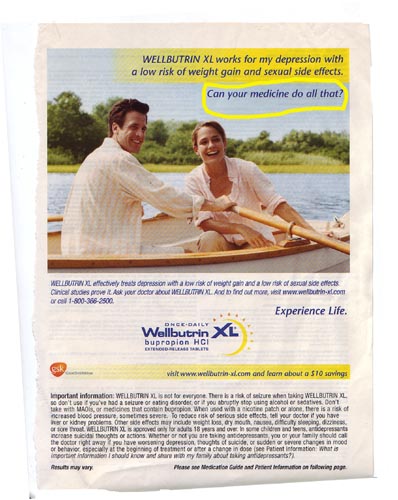
What does it say about the success of DTC advertising that people are assumed to have an antidepressant?
Experiential ads also sell prescription drugs, like vintage ads for the "Kodak Moment," "Maalox Moment" and the old cigarette ads for the "L&M Moment" did. "Lunesta Sleep. Have You Tried it?" asks a 2007 ad, elevating the experience to something akin to "designer sleep."
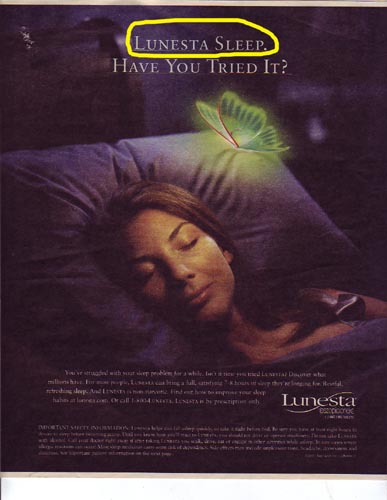
But in addition to a beer and an antidepressant, many people have pets today and there is one kind of ad that will not fly.
"More than a decade of animal research on various animal species has suggested that Librium (chlordiazepozxide HCI) exerts its principal effects on certain key areas of the limbic system," says an ad from the 1970s, showing three monkeys crouching and dangling in cages as assorted experiments are conducted.
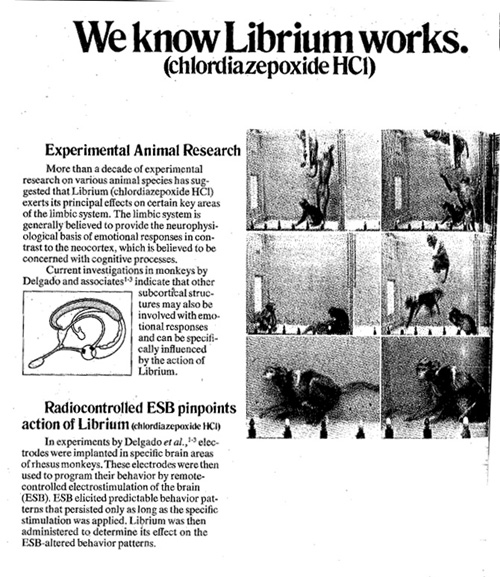
"One of the most sophisticated comparative animal studies ever conducted demonstrates direct action on the satiety centers," reads an ad for the diet pill Pre-Sate with five photos of cats in experiments.

Today, ads for consumer goods assure customers their products weren't tested on animals. And animal experiments are hidden behind a maze of security doors.
Martha Rosenberg's first book, "Born With a Junk Food Deficiency: How Flaks, Quacks, and Hacks Pimp the Public Health," will be published in April by Prometheus Books.
For more by Martha Rosenberg, click here.
For more on health news, click here.